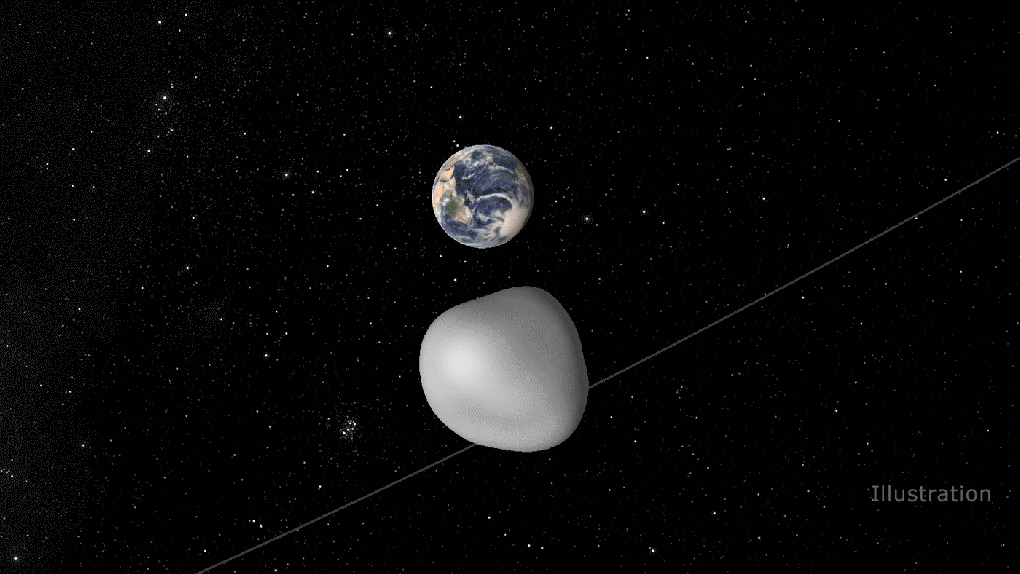Giant, “planet-killer” asteroids are a huge concern for humanity simply because we don’t know if there’s anything we can actually do to stop them from wiping us out. Thankfully, the biggest space rocks have kept a good distance from our planet for quite some time. In just a few days, an asteroid of a much more petite variety is going to make an appearance near Earth, and it’s coming so incredibly close that scientists are going to use it to conduct a mock emergency drill.
The rock, called 2012 TC4, is thought to be between 30 feet and 100 feet wide, and will make its closest approach on October 12th, 2017. That makes it a pretty tiny object, at least as far as asteroids are concerned, but its size isn’t what researchers are most concerned with. TC4 is expected to come within 27,000 miles of Earth, which is just twelve percent — or roughly one-eighth — of the distance between our planet and the Moon. This is going to be a close one.
The good news is that scientists are pretty comfortable with their current predictions of the rock’s trajectory, having revised it from an earlier estimate that put TC4 within 5,000 miles of the Earth’s surface. That said, the asteroid, which will be careening past our planet at a speed of over 30,000mph, is going to be a near-miss, and astronomers from around the globe are going to use it to simulate a real-life “surprise asteroid” scenario.
The International Asteroid Warning Network, which is made up of scientists at observatories from many different countries, will launch a planetary defense alert, summoning the combined power of observational hardware around the world to track and plot TC4’s course in real-time as it cruises past. It will be the ultimate test of the cooperative network’s ability to track a potential threat at a moment’s notice.
“This is the perfect target for such an exercise because while we know the orbit of 2012 TC4 well enough to be absolutely certain it will not impact Earth, we haven’t established its exact path just yet,” Paul Chodas of NASA’s Jet Propulsion Laboratory explains. “It will be incumbent upon the observatories to get a fix on the asteroid as it approaches, and work together to obtain follow-up observations that make more refined asteroid orbit determinations possible.”








